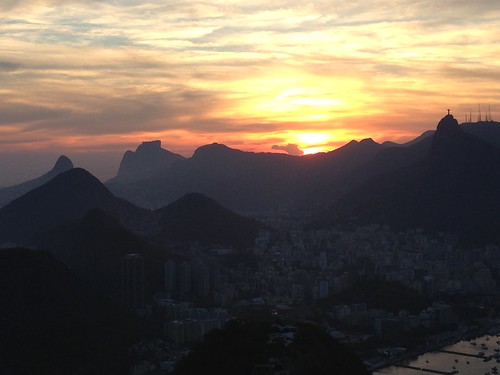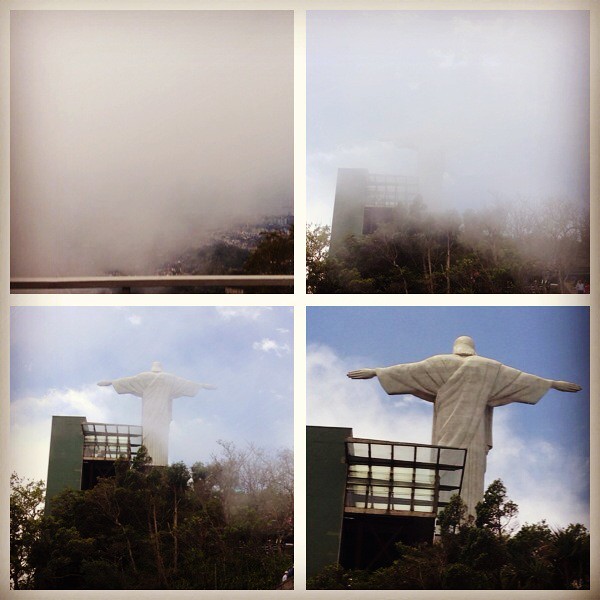This is Sarah bouldering at Morro do Urca in October on a 30-foot-long horizontal called Travessia Rio Terê. I blogged about this bouldering area last month, with a video of my buddy Aloisio flashing the entire traverse. Sarah and I had a few more difficulties, to the entertainment of passers-by wondering why we appeared to be performing a strange religious ceremony with the rocks.

We’d practiced a few days earlier at the small indoor climbing wall of my friend Andre Neves, whom I met in September at this same bouldering route. About a half-dozen people practice twice a week at Andre’s, and I’ve bumped into many of them around Urca over the months, all part of Rio’s niche climbing community that I’ve felt welcomed into.

Before coming to Rio, my only outdoor bouldering experience was this past summer in Central Park, where a few big rocks are great for climbing without need of a harness. That’s the start and end of outdoor climbing in New York City (unless you want to try urban climbing on the buildings and skyscrapers), whereas Rio is full of outdoor bouldering and climbing routes, many still being uncovered and explored. Conquistadors and settlers may have claimed this land centuries ago, but still many more routes through the rocks are to be blazed.
An aside: Why is rock climbing not an Olympic sport? Not only will it not be in the 2016 Rio Olympics, but the International Olympic Committee has also refused to allow it for the 2020 Olympics. Meanwhile, we still have equestrianism (this belongs in the horse Olympics, not the human Olympics) and shooting (which belongs in the woods).
After bouldering for a spell, we took off to catch the sunset from atop nearby Pão de Açúcar, which is one of Rio de Janeiro’s two iconic peaks. The other icon is Corcovado, atop which is the massive art deco statue of Christo Redentor. Both are major draws for tourists, most of whom ride a tram or van to the top. Booo. Unless you’re an invalid or a geriatric, anyone can and should hike at least half-way up the 1300-foot Pão de Açúcar, as we did, and most everyone can hike up the full 2330-foot Corcovado, as we also did.
For Pão de Açúcar, we first we hiked up Morro do Urca (there’s also a $10 cable car) an then we took a cable car for the second leg ($15). At $25 for both cable cars, this is sure to be a decent revenue-collector during the World Cup and Olympics in a few months. Meanwhile the rock climbers can ascend Pão de Açúcar for free…
Either way up, the spectacular 360-degree view is worthwhile on a sunny day.

Many couples especially seem to feel this way, and the romantic setting can be an annoyingly blubbery and crowded spectacle. But also entertaining. One time while climbing the Costao route up the back-side of the mountain, near the top of the path, I stumbled upon two ass naked Brazilians, a guy and a girl (both attractive, let me add). They’d left the main touristy area and walked a few feet down a secluded side path to, erm, partake in the pleasures of the body.
Corcovado was a bit less rewarding to summit. We started the 2-hour hike on a sunny day, starting at an unmarked trailhead behind Parque Lage, winding up through jungle and beneath a few monkeys, then walking beside trolly tracks for a mile to the top train station. Here, I got into a heated and nearly physical standoff with a self-important assistant who refused to allow us to walk on his path and forced us to retrace our steps a half-mile.
Finally, we emerged just below Jesus Christ. But we couldn’t see him — I mean, can you ever? Like a specter, the statue of Christo Redentor, feet away from us, only briefly appeared through the clouds.

